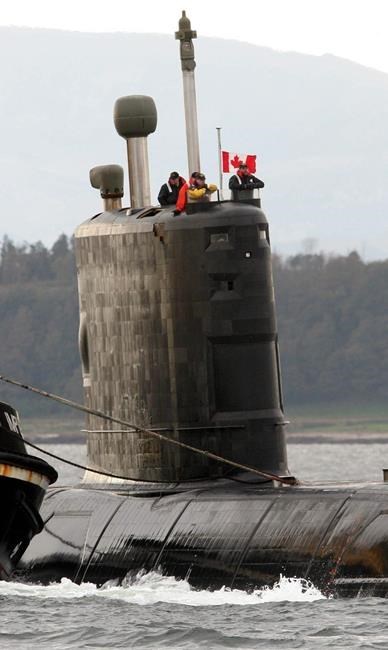HALIFAX — The commander of the Royal Canadian Navy issued an apology Thursday to the sailors who fought a deadly fire aboard the submarine HMCS Chicoutimi in 2004, saying a five-year delay in releasing a study on their health was unacceptable.
“For this delay, for which I can offer no explanation … and for our failure to continue communicating routinely with the ex-crew during the intervening period, I have offered my unreserved apology,” Vice-Admiral Art McDonald told a news conference at Canadian Forces Base Halifax.
“We should have done better, and we will do better.”
The study, which should have been released in 2014, found the submariners suffered from elevated levels of post-traumatic stress disorder, depression and asthma between 2004 and 2009. However, no cases of cancer were reported during that time frame.
The used British submarine, one of four purchased by the Canadian military in 1998, was on its maiden voyage to Canada on Oct. 5, 2004, when it caught fire in rough seas off the coast of Ireland.
Navy Lt. Chris Saunders later died from smoke inhalation, and two other crew members were left badly injured by the toxic fumes. After the fire, virtually all of the crew spent an additional five days on the sub — working on equipment covered in grey soot — as the ship was towed to safety in Scotland.
Another group of military personnel, a 42-member contingent known as the care and custody team, provided security and maintenance for the submarine after it arrived in Scotland. Their health during the first five years was compared with the sub’s crew and a control group made up of 152 healthy submariners.
Navy officials confirmed that one crew member died in 2016, but they declined to confirm his cause of death, citing privacy concerns.
The study found 60 per cent of the sailors aboard the vessel when it caught fire were diagnosed with post-traumatic stress within five years.
That means the 56 crew members were 45 times more likely to be diagnosed with PTSD than the control group, none of whom reported a PTSD diagnosis. The rate of PTSD among the custody team was one per cent.
As well, the study found that between 2004 and 2009, 21 per cent of crew members reported suffering from asthma and 15 per cent were battling depression — rates well above what was found within the custody and control groups.
However, no cases of cancer were reported among the crew during that time period, even though the military has confirmed the sailors were exposed to a nasty chemical cocktail in thick, black smoke that filled the vessel.
The navy shared the results with serving and former sailors earlier in the day, and the navy offered them three options for a longer-term study that will look at the period between 2009 and 2019.
Over the past 14 years, many sailors have come forward to state they were worried about being exposed to toxic fumes that are known to cause cancer. But the navy has repeatedly noted that the fire was extinguished quickly, resulting in limited exposure.



